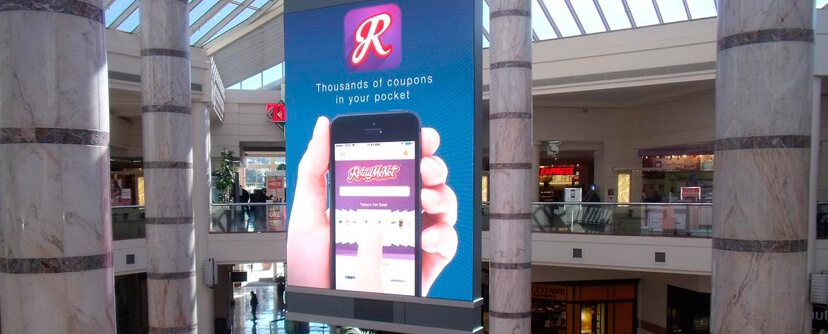
Beyond App Install Ads: 3 Complementary User Acquisition Channels
App install campaigns are one of the most effective ways to drive new users to a mobile service, but they’re far from being the only effective method. At RetailMeNot, we are always on the hunt for creative ways to reach our target audience and help them save money on their favorite products and brands.
This post looks at three user acquisition channels we use to generate a significant number of new mobile users, beyond app install ads, including: (1) the RetailMeNot website, (2) search engines, and (3) physical signage.
Leveraging your web presence to drive app installs
RetailMeNot users get the best shopping experience on our mobile app, but a significant number of shoppers first interact with our brand on our website, both desktop and mobile. To get more people using the RetailMeNot app, we take advantage of our web traffic by giving shoppers a preview of the app experience and offering app-exclusive benefits.
We make it easy for users to download the app from our mobile website, with links to the App Store or Google Play Store on every coupon page. On the desktop site, users can enter their phone number to receive a text message with a link to install the app. Whether on desktop, tablet, or smartphone, a shopper is never more than 3 clicks away from installing the RetailMeNot app and getting the best possible shopping experience.
Leveraging search engine marketing to promote app engagement
Search engine marketing can be a cost-effective complementary user acquisition channel for mobile marketers, especially with mobile engagement ads from Google AdWords. Mobile engagement ads allow marketers to deep link directly from search engine results to a relevant screen in our Android app. If the user already has our app installed, they go straight from the search results page to the specified screen inside the app. But if the user hasn’t yet installed our app, they will be prompted to first install the app, then continue to the screen specified in the deep link.
At RetailMeNot, we run mobile engagement ads on terms like “Pizza Hut coupons” or “Target coupons” to capture people who are clearly ready to purchase, but just need a little push in the form of a coupon. Once they download and open the app, they’re taken straight to the coupon they searched for. No lengthy extra steps required.
We also spend on search engine marketing to drive shoppers to the RetailMeNot website. Desktop and mobile web traffic is still huge, and by delivering users to our web property, we can get them hooked on RetailMeNot then recommend they download our app to get the most value from service.
Using physical signage to drive app installs in the real world
Marketers of apps that provide real-world utility have a unique opportunity to use physical signage to drive installs and engagement. The RetailMeNot mobile app is great for users who do their shopping not only online but offline as well. To take advantage, we place signage in malls to promote the savings shoppers can earn while shopping. While online shopping is massive, 94% of total retail sales are still made in brick and mortar shops, making it important for us to have a physical presence where people are spending the most.
Physical signage also helps RetailMeNot capitalize on the fact that 84% of in-store shoppers use their mobile device before or during a shopping trip, mostly to check prices.
If you’re a retailer with an app of your own, you have the bonus opportunity to capitalize on competition-free advertising in your own store. A great example of a chain doing this is Walmart – you see signage promoting their app in nearly aisle, and their employees wear badges promoting app downloads as well. In addition to zero competition, advertising in your own store is cheap. The only cost is the signage itself!
App install campaigns are a great source of new users for nearly any app, but only represent one method for discovering new apps. To maximize user acquisition efforts, marketers of shopping apps may want to look at other, complementary channels to drive mobile app adoption.